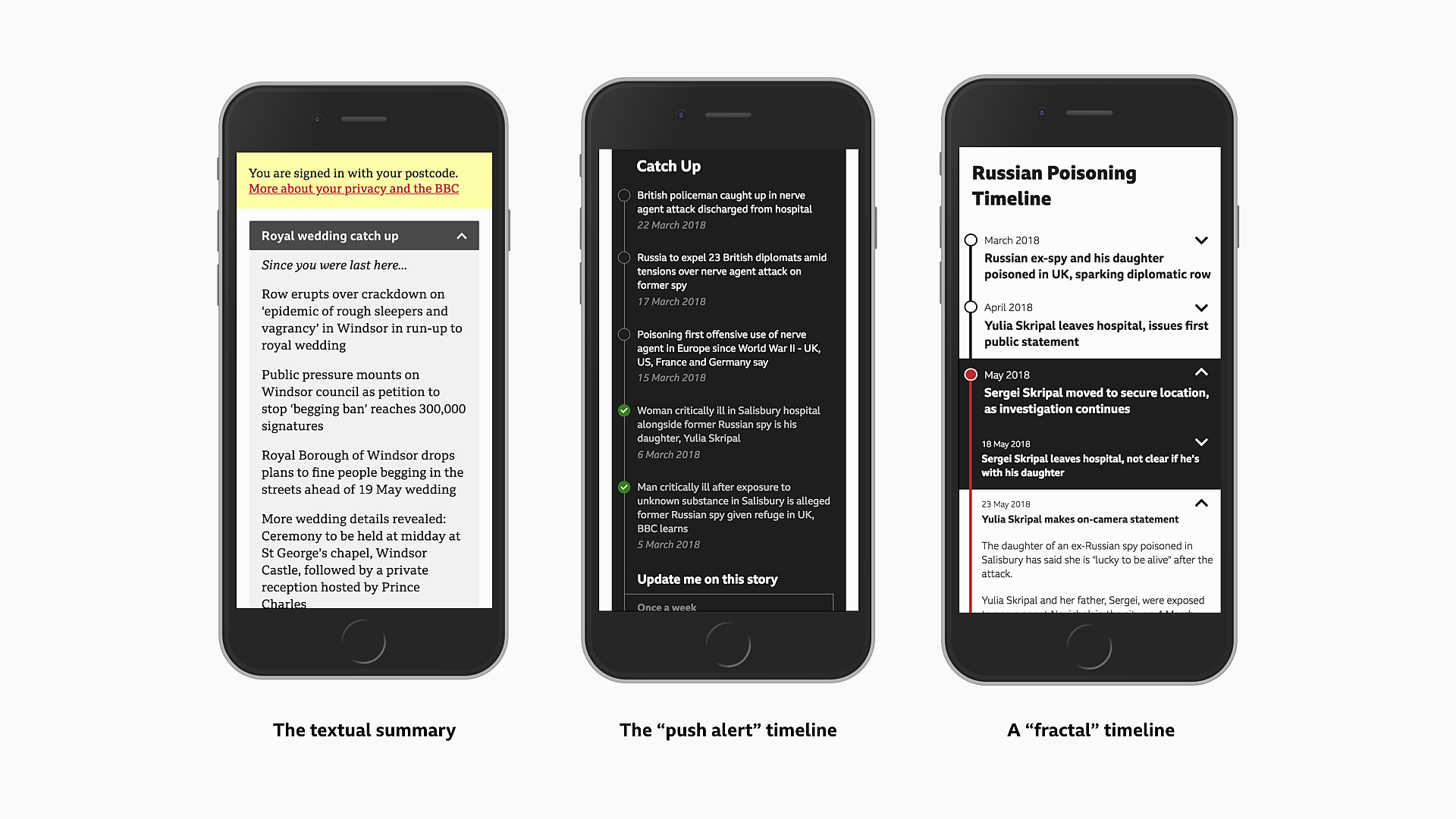35 content format prototypes, one year, and lots learned at the BBC

The BBC’s innovation laboratory publishes its results and presents the prototypes that had the greatest impact on audiences.
For the past year, the BBC News Lab has been testing a number of prototypes for presenting and structuring content (35 in total!) with the aim of discovering new ways to tell stories and structure the (sometimes complex) information that the public broadcaster wants to offer.
Tristan Ferne, head producer of the BBC’s R&D project, published a very detailed article on the prototypes that had a positive impact (and those that were not well received at all).
This article is a gold mine for any innovative content marketer or content designer wishing to explore new presentation or structure models that can be adapted to the needs of the reader/listener/etc.
I consider that many of these prototypes could be deployed by advertisers and brands.
In the projects that Ferne describes, there are several very interesting explorations on the notion of reader empathy, where the content can be adapted according to the desires of the person who consumes it.
Two of the objectives of the last few months were to:
- Tweaking the stories based on each reader’s information needs
- Breaking down the news into more digestible bits, helping readers grasp the complexity of various current events
In the article, you will find lots of details about their discoveries as well as about the prototypes that didn’t work.
An article to save, and to bring up during your brainstorming sessions when you would like your brand to innovate in the way it publishes and deploys its content.

